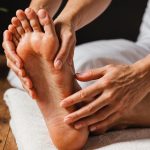In recent years, there has been a growing shift towards exploring alternative therapies for managing chronic pain, driven by the desire to reduce dependency on medications. While pharmaceutical interventions have their place, they often come with a myriad of effects and risks, such as addiction and tolerance. This article delves into some of the most effective and evidence-based practices that can aid individuals in their journey to pain management without relying solely on medication. Through this exploration, we aim to empower you with knowledge to enhance your quality of life.
Understanding Chronic Pain and Its Impacts
Chronic pain affects millions globally, manifesting as an ongoing or intermittent condition lasting more than 12 weeks. It can result from various causes, including injuries, surgeries, or underlying health conditions. The effects of chronic pain extend beyond the physical realm, impacting emotional and mental health. Research indicates that chronic pain can lead to anxiety, depression, and a diminished quality of life.
This might interest you : How can you identify the signs of depression and what steps can you take to seek help?
Individuals grappling with chronic pain often face an intricate web of challenges ranging from societal stigma to a lack of evidence-based treatment options. This complexity necessitates a multifaceted approach to care that considers both the physiological and psychological dimensions of pain.
Traditional pain management strategies heavily rely on medications, which can sometimes exacerbate the problem. Over time, patients may develop a tolerance requiring higher doses, thus increasing dependency risks. Therefore, understanding the broader impacts of chronic pain is crucial in exploring alternative therapies that promise holistic relief.
Also to see : What are the key components of a healthy work-life balance, and how can you achieve it?
Exploring Physical Therapies as Pain Management
Physical therapies have emerged as a cornerstone in chronic pain management, offering a non-invasive alternative to medication. These therapies encompass various techniques aimed at improving mobility, reducing pain, and enhancing overall well-being. Key physical therapies include:
-
Exercise and Activity: Engaging in regular exercise can significantly alleviate pain symptoms. Studies have shown that aerobic exercises, stretching, and strength training can reduce inflammation and improve circulation, leading to better pain outcomes. Low-impact activities like swimming or yoga are often recommended for those with joint pain.
-
Manual Therapy: Techniques such as massage, acupuncture, and chiropractic care fall under manual therapy. These methods focus on manipulating soft tissues and joints to alleviate discomfort and enhance mobility.
-
Heat and Cold Treatments: Alternating between heat and cold applications can be beneficial in pain management. Heat helps relax muscles and improve blood flow, while cold therapy can reduce inflammation and numb sharp pain.
Embracing physical therapies requires determination and consistency. However, the potential benefits can be substantial, contributing to improved quality of life without the dependence on medication.
Cognitive Behavioral Therapy and Psychological Approaches
Beyond physical therapies, cognitive behavioral therapy (CBT) has gained recognition as an effective tool in managing chronic pain. CBT addresses the psychological aspects of pain, teaching patients how to modify negative thought patterns and behaviors that may exacerbate their condition.
-
Cognitive Restructuring: This technique helps patients identify and challenge unhelpful thoughts that can magnify pain perception. By reframing these thoughts, individuals can experience a reduction in pain-related stress and anxiety.
-
Mindfulness and Relaxation Techniques: Incorporating mindfulness practices such as meditation and guided imagery can aid in managing pain. These techniques promote a state of relaxation, helping to break the cycle of pain and stress.
-
Biofeedback: This approach uses electronic devices to monitor physiological functions such as heart rate and muscle tension. By becoming aware of these responses, patients can learn to control them, thus reducing pain sensations.
Psychological therapies empower patients to take an active role in their care, fostering resilience and adaptability in the face of chronic pain challenges.
Evaluating the Evidence: Studies and Outcomes
A growing body of studies provides compelling evidence supporting non-pharmacological interventions for chronic pain. Research consistently highlights the positive outcomes associated with integrative approaches, emphasizing their role in enhancing the quality of life for those affected.
-
Longitudinal Studies: These studies track the progress of patients over extended periods, revealing sustained benefits of combining therapy modalities. Results suggest that patients who engage in both physical and psychological therapies report lower pain levels and improved daily functioning.
-
Meta-Analyses: By pooling data from various trials, meta-analyses provide a comprehensive overview of treatment effects. Many analyses report favorable outcomes for therapies like CBT and exercise, reinforcing their place in non-drug pain management.
-
Patient Reviews: Anecdotal evidence from patient experiences also highlights the importance of personalized treatment plans. Patients often express a sense of empowerment and improved mental health when incorporating alternative therapies.
While medication may remain a component for some, integrating multiple therapies offers a balanced, holistic approach to tackling chronic pain.
Navigating the complexities of chronic pain requires a nuanced approach that transcends reliance on medication. Through a combination of physical therapy, psychological strategies, and a commitment to informed care, individuals can achieve meaningful pain management. As our understanding of pain evolves, so too do the treatment options available.
The journey toward effective pain management is deeply personal, requiring dedication and an open mind. By incorporating these best practices into daily life, you can enhance your quality of life, ensuring that pain does not dictate your story. Embrace these strategies to reclaim your health and well-being, armed with knowledge and supported by evidence.











